It’s easy to get confused between the different specialities in dentistry. There are many, such as endodontics, periodontics, prosthodontics, and cosmetic dentistry, and one of them is also orthodontics.
An orthodontic treatment is aimed at improving the appearance and function of the teeth. And one of the most popular or maybe even the only orthodontic treatment that many people are familiar with is getting braces. But dental orthodontics is a lot more about than just getting your teeth straightened out.
In this guide, you’ll learn more about the different types of orthodontic treatments, who they’re for, how you can get them, and how much you might have to pay for them.
What Is Orthodontics?
According to the General Dental Council (GDC), orthodontics is a dental speciality that involves the “diagnosis, prevention, interception, and treatment” of issues that are negatively impacting the teeth and the bite (how upper and lower teeth meet) and “the growth of the face.” Orthodontics meaning to straighten or correct the teeth.
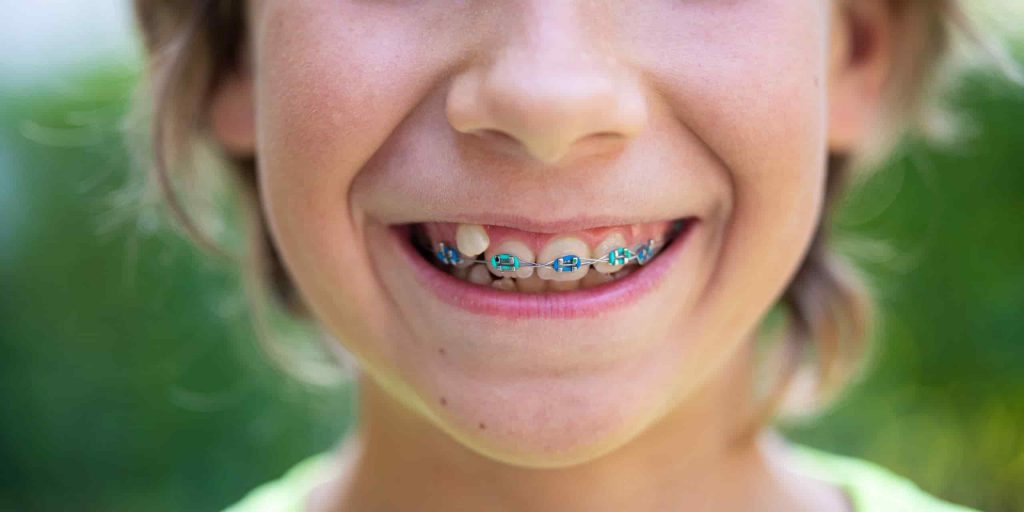
No matter whether you’re an adult or a child, you can be suitable for an orthodontic treatment – although childhood years might be considered the best for a treatment like braces.
The goal is to change the position of the teeth, move them or straighten them out so they look better, are healthier, and are able to perform their function (like chewing) better. The British Orthodontic Society (BOS) states that it has to do with “improving the harmony of your mouth and jaws.”
It should be noted that all qualified dentists can dispense orthodontic services, but in order to be considered a “specialist orthodontist,” they need to apply for its special training scheme (after they’ve gotten a degree in Dentistry and qualified as a dentist).
After 3 years of training, passing the Membership in Orthodontics examination (MOrth) and registration on GDC’s orthodontic specialist list, they become specialist orthodontists.
Keep in mind that an orthodontic therapist is not the same as a specialist. They work with them, under their supervision and can only perform treatments that don’t make permanent changes to the teeth (like fitting retainers).
But in the UK, it’s usually the general dental practitioner that comes first. They identify the problem, and if they can’t help you, they’ll refer you to a specialist.
What Is Orthodontic Treatment?
An orthodontic practice aims at improving the position of the teeth to improve their appearance, make the upper and lower teeth come together and make the teeth perform their functions better.
The NHS uses an “Index of Orthodontic Treatment Need (IOTN)” to determine whether a patient needs an orthodontic treatment that can be offered under the general dental services of the NHS.
The NHS Inform has summarised the 5 grades of this index, which are as follows:
- Grade 1 – teeth that more or less have nothing wrong with them.
- Grade 2 – small issues, such as with alignment.
- Grade 3 – aesthetics of the teeth are visibly not normal.
- Grade 4 – teeth are even more visibly irregular and require treatment due to “health reasons.”
- Grade 5 – teeth have significant health issues, such as a number of them are missing and protruding 9mm+ at the front
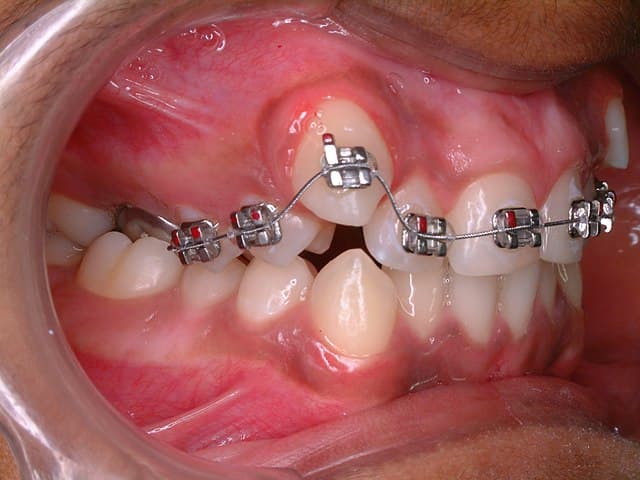
Starting from Grade 3, treatment may be available on the NHS. But since Grades 4 and 5 are more severe, they are more likely to get treatment. In any case, you need to consult your dentist about it.
It’s free for people under the age of 18, but the NHS does warn about the long waiting list. Privately, an orthodontic treatment can cost you about £2,000 to £6,000 – the price can vary.
Why Is Orthodontic Treatment Performed?
Orthodontic treatments can be performed to improve the bite and the overall alignment of the teeth, and it can be done for aesthetic and/or functional reasons.
According to a study published in the British Dental Journal, problems with the alignment of the teeth (malocclusions) can have a negative impact on the quality of life of not just the child but also their family.
Even as adults, many people can feel like wanting to hide their teeth because they’re embarrassed of how they look. These things can act as motivators for people seeking orthodontic treatments.
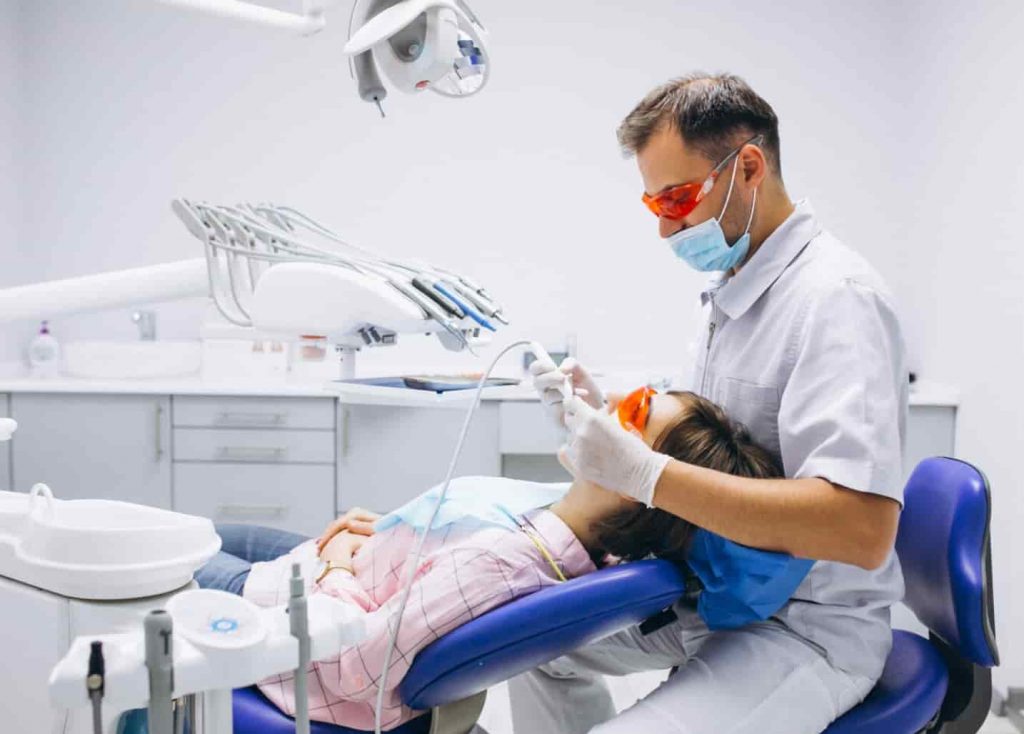
But the problem can go much deeper. For example, if your teeth are so irregular that it’s becoming difficult for you to keep your teeth clean, that inaccessibility can lead to problems like plaque build-up, tooth decay and gum disease.
Such teeth might also be more prone to injuries and can injure the tissue inside your mouth by constantly poking into them or rubbing against them. Additionally, they can make it difficult for you to eat, breathe and speak normally.
Such instances may make your dentist recommend an orthodontic treatment to you so that you can better enjoy and use your teeth.
What Does Orthodontics Treat?
According to the British Orthodontic Society, orthodontics can treat the following:
- Crowding of the teeth
- Gaps between teeth
- Protruding teeth
- Open bite (upper and lower teeth don’t meet)
- Deep bite (upper teeth overlap too much over the lower ones)
- Crossbite (upper teeth are behind the lower ones)
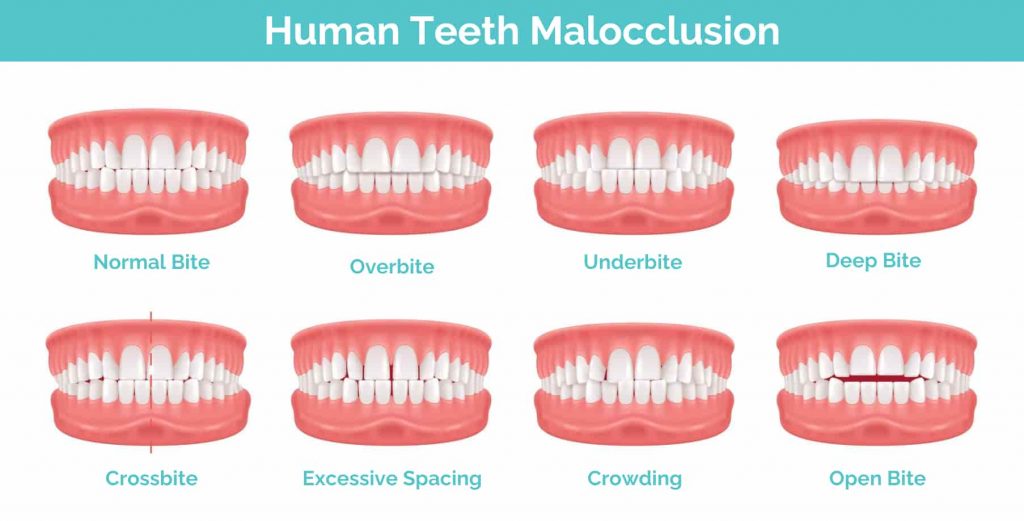
It can help patients with cleft lip and palate. Note that it’s not just these problems that orthodontics fix; they also take care of the problems resulting from these alignment issues, such as difficulty eating, speaking, breathing, aches and pains, gum disease, etc.
What Are The Types Of Orthodontic Treatment?
Orthodontic treatment can go from minimally invasive to being very invasive when surgical intervention is required to address the underlying issues with the jaw bone.
One of the most popular treatments for improving the alignment of the teeth and the bite is getting orthodontic braces. Metal braces with wire and brackets are more commonly seen, but there are other types of braces as well, such as:
- clear aligners or invisible braces
- self-litigating braces (special brackets hold the wire in place)
- lingual braces (braces go at the back of the teeth)
- ceramic braces (not coloured so less visible)
After braces, you also have to wear a retainer to keep your teeth in position. As an adult, you need to wear a retainer for life so that the gains of the braces are not lost. The treatment itself can last for 6 months to 2.5 years, according to the NHS, it depends on how bad the problem is.
Other than braces for orthodontics, this speciality of dentistry can also include appliances like splints, mouthguards, palatal expanders, space maintainers, etc. They’re all used in different ways to make sure that the teeth are protected from alignment issues and/or trauma.
Here, you should also know that the dreaded headgear is also a part of orthodontics, which is used to treat a number of alignment issues. Your dentist might only recommend that you wear it at nighttime.
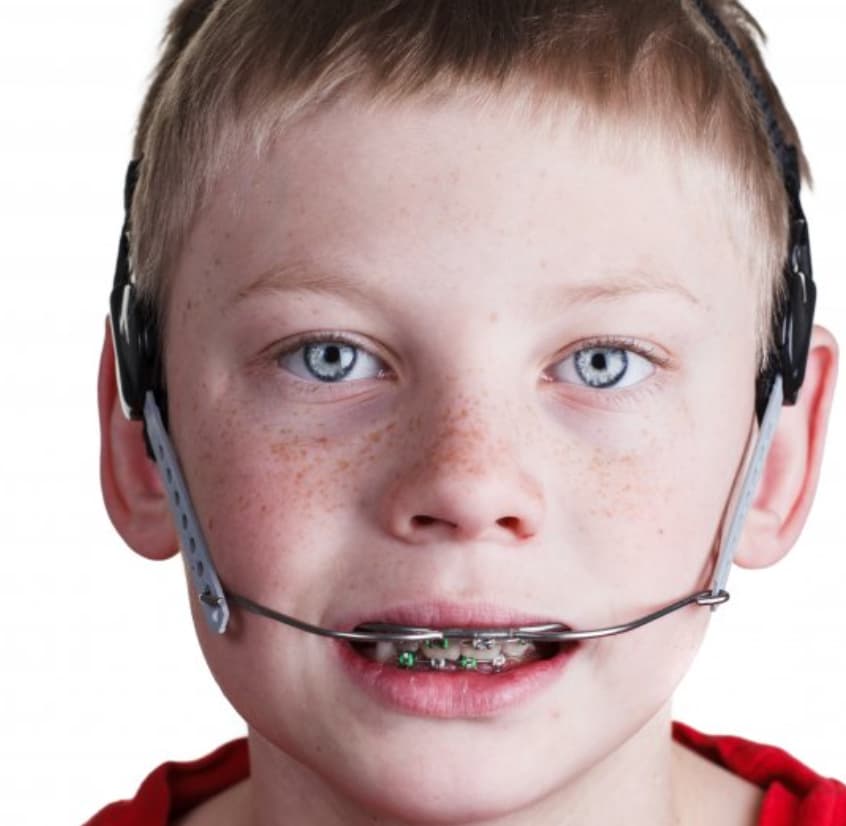
When it comes to surgery, jaw or orthognathic surgery is also done as an orthodontic treatment. With this, your surgeon will address the issues with your jawbone so that a balance between your jaws is obtained.
Who Needs Orthodontic Treatment?
As mentioned above, dentists in the NHS use an Index of Orthodontic Treatment Need to determine who needs orthodontic treatment. Those on the Grade 1 and 2 are unlikely to get it.
If you’re in Grade 3, it might be considered, but it’s levels 4 and 5 when the issues with the teeth are more serious – warranting a treatment. It’s not a good idea for you to make this orthodontic assessment yourself. You must reach out to your dentist for this.
What Are The Benefits Of Having Orthodontic Treatment?
Depending on the issue caused by your teeth, getting an orthodontic treatment might have the following benefits for you:
- Improvement in self-esteem
- Betterment in speech
- Improvement in the ability to eat and chew
- Improvement in breathing
- Having teeth less prone to injuries
- Having teeth that are more easily cleaned and better taken care of
Just make sure that when you’re looking for an orthodontic clinic, make sure to do your research so that you get the best possible treatment.
Conclusion
Orthodontic treatments are very important to the field of dentistry. How a person’s teeth appear to them can have a significant influence on how they perceive themselves, which can, in turn, have an impact on their self-confidence. However, with the help of orthodontics, it’s possible to straighten the teeth and have them look much more aligned.
And on a more functional level, orthodontic treatments can also improve the position of the upper and lower jaws relative to each other, making sure they come together normally.
Therefore, it can also improve the bite and help with things, such as speaking, eating, and breathing. If you’re unsure about needing orthodontics for yourself, make sure to get in touch with a registered and board-certified dental professional.
Reviewed and approved by Dr Izbel Aksit
FAQ
Are braces orthodontic treatment?
Getting braves does fall under the category of orthodontic treatment. These help shift the position of the teeth to change their alignment.
Can dentists do orthodontics?
Dentists can offer orthodontic treatments. However, there are specialist orthodontists on the GDC that your general dental practitioner can refer you to for treatment.
Can orthodontics change face shape?
Since orthodontics can change the alignment of your teeth and even the underlying jawbone, it can change the appearance of your face. The change might be more noticeable if you have a severe problem.
Does dental insurance cover orthodontics?
If you’re under 18, you can get orthodontic treatment for free on the NHS. Adults usually turn to private. However, some plans might cover orthodontics, so make sure to ask.
How long between orthodontic appointments?
The time between each orthodontic appointment will depend on the treatment you’re undergoing. According to the British Orthodontic Society, you’ll need regular appointments every 4-10 weeks. And keep in mind that treatment can take years.
Is orthodontic treatment necessary?
Orthodontic treatment isn’t always necessary. Many people get it for aesthetic reasons, while others need it for health reasons.
Is orthodontic treatment painful?
Initially, you can feel some aches and pains after starting your orthodontic treatment. In any case, you should talk to your dentist if you’re experiencing it.
